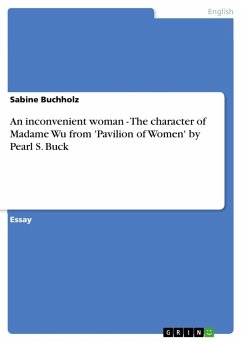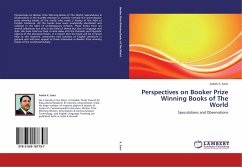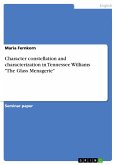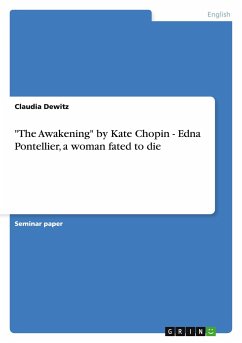Essay from the year 2006 in the subject American Studies - Literature, grade: 1,0, University of Siegen (FB 3: Literatur-, Sprach- und Medienwissenschaften), course: Nobel Prize Winners in English: Instantly Canonized?, language: English, abstract: In 1946, Pearl S. Buck, winner of the Nobel Prize in 1938, published Pavilion of Women, a novel about a Chinese woman who withdraws from married life by ordering a concubine for her husband. The inspiring work deals with Chinese traditions in particular as well as with general questions of individual freedom and existence, possession, love, religion, (female) psychology, gender issues and human interrelations. Although critics tend to complain especially about the story's sentimentalism, there are, however, many colourful descriptions of Chinese habits and customs, which may not only teach Western readers a great deal about the exotic culture but also about divergent philosophical and psychological issues. This essay is, above all, toconcentrate on the extraordinary female protagonist, Madame Wu, the matron of an influential aristocratic Chinese family. At this, focuses on questions like the following: How is the specific woman presented with regard to her (outer) physical appearance and body features, but also concerning her (inner) characteristic attributes, in other words, her mind? In what way are symbols employed to undermine her characteristics? And, how is the character development - from the indifferent rationalist to the woman capable for love - underlined?








